Nishizaka, Suwa-no-Mori Area
Why not explore the illuminated nights of Nagasaki on a "City Walk of Light"?
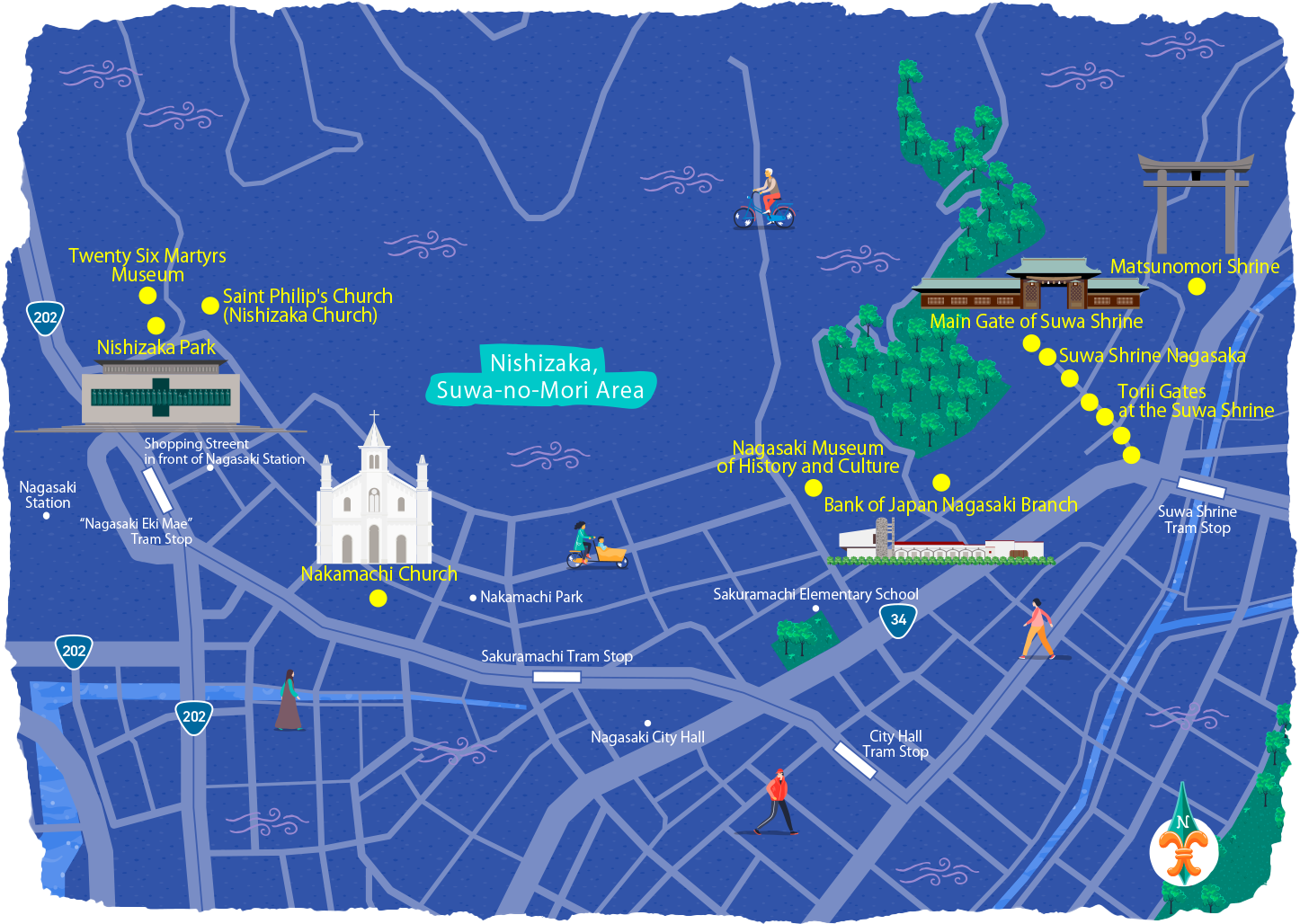
-
Nakamachi Church
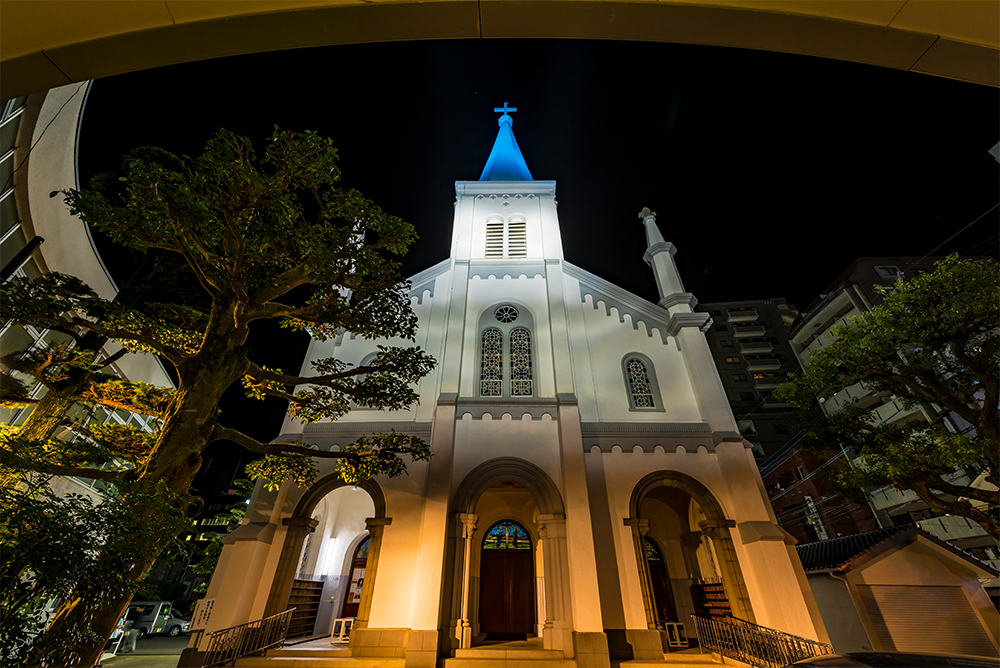
The church was designed by Father Papinot from France and its construction began in 1891. On September 8, 1897, during the celebration of the Feast of the Nativity of the Blessed Virgin Mary, the dedication ceremony took place. It also marked the 300th anniversary of the martyrdom of the 26 saints. It is designated by Nagasaki City as a valuable atomic bomb heritage site, with a plaque installed beside the church gate. At night, the church’s spire is symbolically illuminated.
-
Nishizaka Park
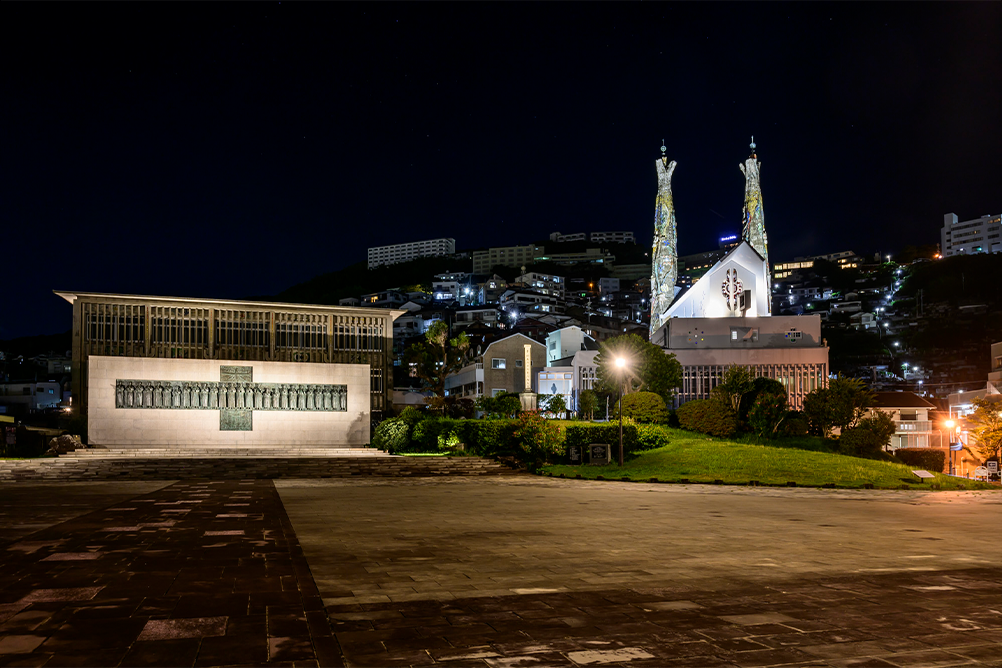
This place is where six Franciscan missionaries and twenty Japanese believers were executed in 1597 due to the Christian ban order. A monument with bronze statues of the martyrs and a memorial hall have been erected here. During the evening, the memorial hall, the church, and the relief of the martyrdom are solemnly lit up, creating a space for prayer and faith.
-
Bank of Japan Nagasaki Branch

Established in 1945, this branch features a stone tower designed to harmonize with the exotic streetscape of Nagasaki. At night, the stone tower is beautifully illuminated.
-
Suwa Shrine
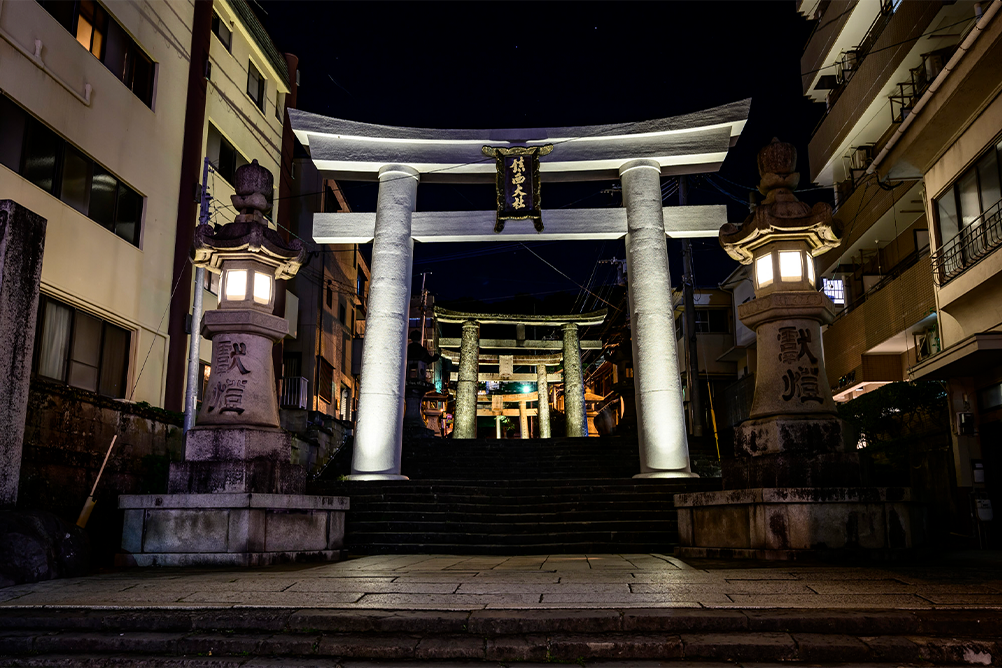
Established in 1625. The shrine's autumn festival, Nagasaki Kunchi, is considered one of Japan's three major festivals, known for its lavish and exotic atmosphere. At night, the light illuminating from the first to the fifth torii gates creates an atmosphere that draws visitors to the main gate.
-
Matsunomori Shrine
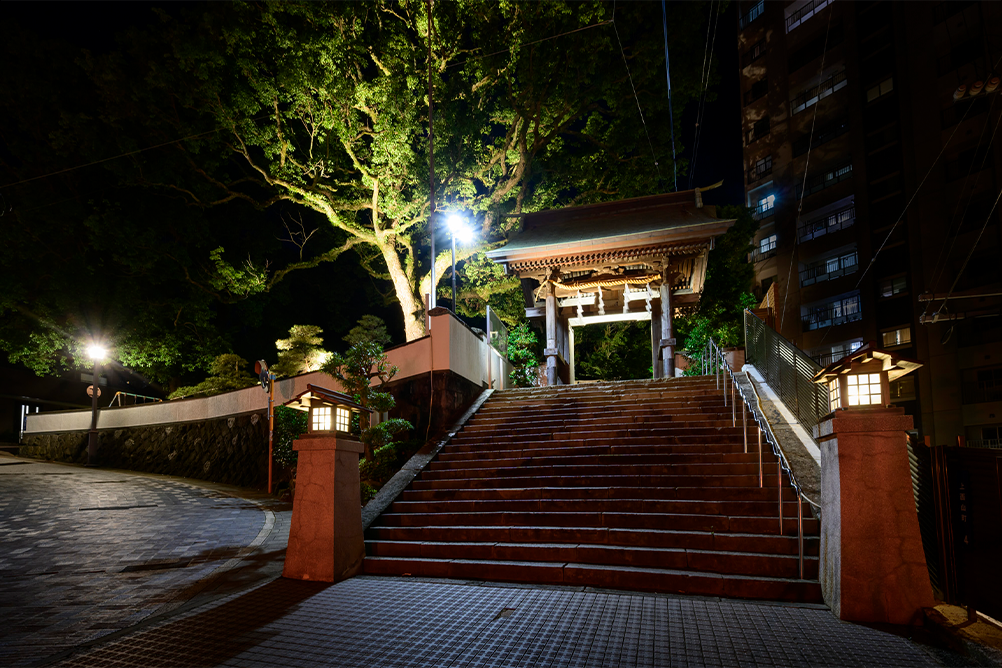
Matsunomori Shrine, along with Suwa Shrine and Isenomiya Shrine, is one of the three major shrines of Nagasaki. It is a Tenmangu shrine that enshrines Sugawara no Michizane and has long been beloved by the people of Nagasaki as the god of learning. At night, the shrine gate and the vigorous camphor trees are beautifully lit up.

